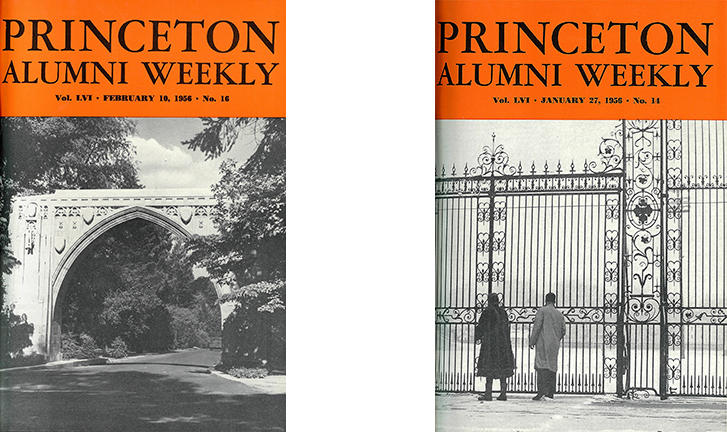Photographer Elizabeth Menzies Showed Princeton to the World
Princeton Portrait: Elizabeth Grant Cranbrook Menzies (1915–2003)
Elizabeth Menzies, artist and photographer, served as the eyes of Princeton for almost half a century. The daughter of Professor Alan Menzies, who taught chemistry at the University, Menzies took a childhood interest in photographic chemistry, using photosensitive emulsions and chemical baths to lift visions out of the dark. She became an indispensable chronicler of Princeton life. “In the past two decades,” the Town Topics weekly newspaper remarked in 1956, “nearly one out of every five issues of the Princeton Alumni Weekly has displayed a Menzies photograph on its cover.”
In 1939, Menzies, then 24, made her name with a photograph of Albert Einstein she took for Scientific American. Just getting the famous physicist to sit for a portrait was an achievement in itself, as he had come to resent his notoriety. One of the secretaries at the Institute for Advanced Study had the job of stopping unannounced visitors who came to tell Professor Einstein their idea for a perpetual motion machine, or world peace, or what have you, and telling them that the professor was away from his office and would surely return soon — then keeping them waiting in a chair by her desk until the clock ran out at the end of the day, while Einstein peacefully worked in his office just a few feet away. In contrast to the way most photographers captured him in his home — from above, with Einstein flinching away from the camera — Menzies knelt at the seated man’s eye level and looked at him straightforwardly, as photography connoisseurs have noted. Perhaps she told a joke; he stifled a smile. The result was a portrait that seems like a work of disclosure rather than exposure: a famous face looking steadily at the viewer, brows arched, as though the sitter is weighing whether to divulge a secret.

In 1967, Menzies published Princeton Architecture: A Pictorial History of Town and Campus, which she co-authored with Constance Greiff and Mary Gibbons. The book argues that the town of Princeton comprises a detailed architectural record of American history: “Almost every era has produced a scattering of notable buildings in Princeton. ... One can read the unfolding of history not only in the pages of a book but in the palpable form of wood and brick.” Menzies believed in preserving memories of the past — especially intimate, forgettable ones. In a letter to a local newspaper, she recalled the snowy winters of her Princeton girlhood: “The University sent an orange-painted, prow-shaped plow pulled by a horse to clear the way for pedestrians.”
Menzies published three other books and traveled across Europe to take photographs for the Index of Christian Art. Her photographs also appeared in Fortune, Life, The Saturday Evening Post, and Time, among other publications. She retired from the University in 1980, leaving behind thousands of images that have helped Princetonians all over the world to share memories.















No responses yet